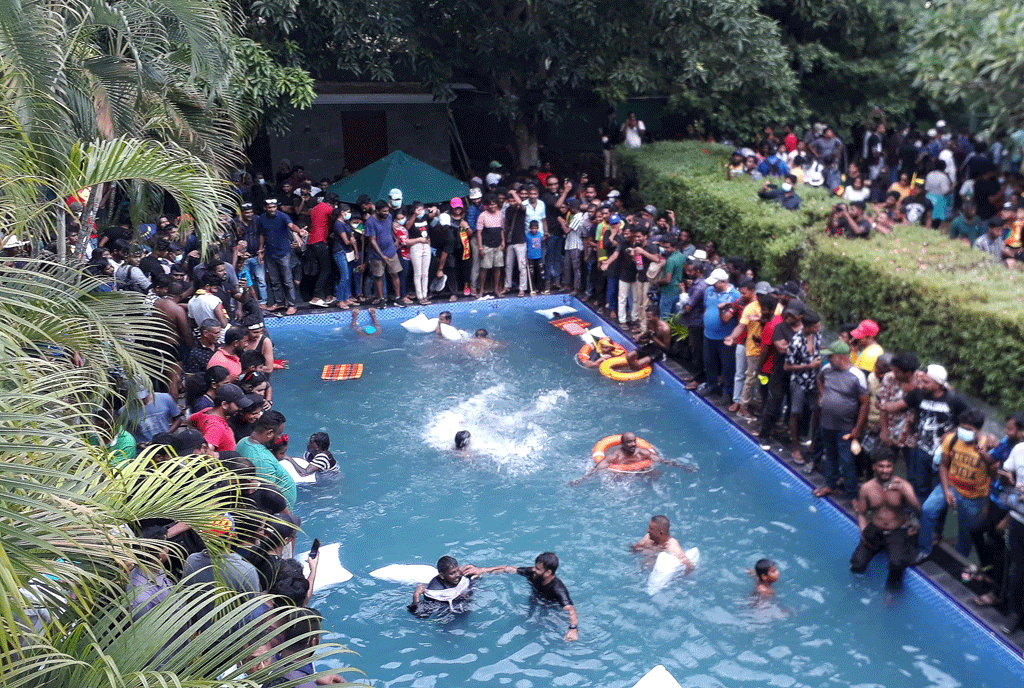Sri Lanka prime minister's house set on fire

Sri Lankan President elect Ranil Wickremesinghe. PHOTO/FILE/COURTESY
What you need to know:
- The government has defaulted on its $51 billion external debt and is seeking an International Monetary Fund bailout.
Sri Lankan protesters set the prime minister's private home on fire, hours after chasing the president from his residence, as months of frustration over an unprecedented economic crisis boiled over on Saturday.
A mob stormed into Sri Lankan Prime Minister Ranil Wickremesinghe's home in Colombo on Saturday evening and set it ablaze, police and his office said.
"Protesters have broken into the private residence of Prime Minister Ranil Wickremesinghe and have set it on fire," his office said in a statement.
Sri Lanka: timeline of a crisis
Sri Lanka is mired in a deep political and economic crisis and on Saturday the country's president was forced to flee his residence not long before it was stormed by a huge crowd of protesters.

Police fire tear gas canisters to disperse protesters demanding the resignation of Sri Lanka's President Gotabaya in a street leading to Sri Lanka's Presidential Palace in Colombo on July 9, 2022. PHOTO/AFP
The island nation of 22 million people has suffered months of lengthy blackouts, acute food and fuel shortages and galloping inflation in its most painful downturn on record.
Months of protests have demanded the resignation of President Gotabaya Rajapaksa, whose government has been blamed for chronic mismanagement of the country's finances.
The South Asian country emerged from a devastating civil war in 2009, only to be rocked by Islamist bombings in 2019, before being hit hard the following year by the Covid-19 pandemic which left the island bereft of tourists.
Here is a look back at how the crisis has unfolded:
April 1: State of emergency
Rajapaksa declares a temporary state of emergency, giving security forces sweeping powers to arrest and detain suspects, after a spate of protests.
April 3: Cabinet resigns
Almost all of Sri Lanka's cabinet resigns at a late-night meeting, leaving Rajapaksa and his brother Mahinda -- the prime minister -- isolated.
The governor of the central bank, having resisted calls to seek a bailout from the International Monetary Fund (IMF), announces his resignation a day later.
April 5: President loses majority
President Rajapaksa's problems deepen as finance minister Ali Sabry resigns just a day after he was appointed.

Protestors participate in an anti-government demonstration outside the President's office in Colombo on July 9, 2022. PHOTO/AFP
The embattled leader loses his parliamentary majority as former allies urge him to quit. He lifts the state of emergency.
April 10: Medicine shortages
Sri Lanka's doctors say they are nearly out of life-saving medicines, warning that the crisis could end up killing more than the coronavirus pandemic.
April 12: Foreign debt default
The government announces it is defaulting on its foreign debt of $51 billion as a "last resort" after running out of foreign exchange to import desperately needed goods.
April 19: First casualty
Police kill a protester, the first casualty of several weeks of anti-government protests.
The next day the IMF says it has asked Sri Lanka to restructure its colossal external debt before a rescue package can be agreed.
May 9: Day of violence
A mob of government loyalists bussed in from the countryside attack peaceful protesters camped outside the president's seafront office in Colombo.
Nine people are killed and hundreds more injured in the reprisal attacks that follow, with crowds targeting those responsible for the violence and setting fire to the homes of lawmakers.

Army personnel sit near demonstrators (unseen) demanding the resignation of Sri Lanka's President Gotabaya Rajapaksa gather inside the compound of Sri Lanka's Presidential Palace in Colombo on July 9, 2022. PHOTO/AFP
Mahinda Rajapaksa resigns as prime minister, and has to be rescued by troops after thousands of protesters storm his residence in Colombo.
He is replaced by Ranil Wickremesinghe, a political veteran who had already served several terms as premier.
May 10: Shoot-to-kill orders
The defence ministry orders troops to shoot on sight anyone involved in looting or "causing harm to life".
But protesters defy a fresh government curfew, which is rolled back at the end of the week.
The top police officer in Colombo is assaulted and his vehicle set ablaze.
June 10: 'Humanitarian emergency'
The United Nations warns that Sri Lanka is facing a dire humanitarian crisis, with millions already in need of aid.
More than three-quarters of the population had reduced their food intake due to the country's severe food shortages, the UN says.
June 27: Fuel sales suspended
The government says Sri Lanka is nearly out of fuel and halts all petrol sales except for essential services.
July 1: New inflation record
The government publishes data showing inflation has hit a record high for the ninth consecutive month, a day after the IMF asks Sri Lanka to rein in high prices and galloping inflation.
July 9: President's home stormed
President Rajapaksa flees his official residence in Colombo with the assistance of troops, shortly before demonstrators storm the compound, and he is taken to an undisclosed location.
Footage from inside the residence shows jubilant protesters jumping in the pool and exploring its stately bedrooms.





